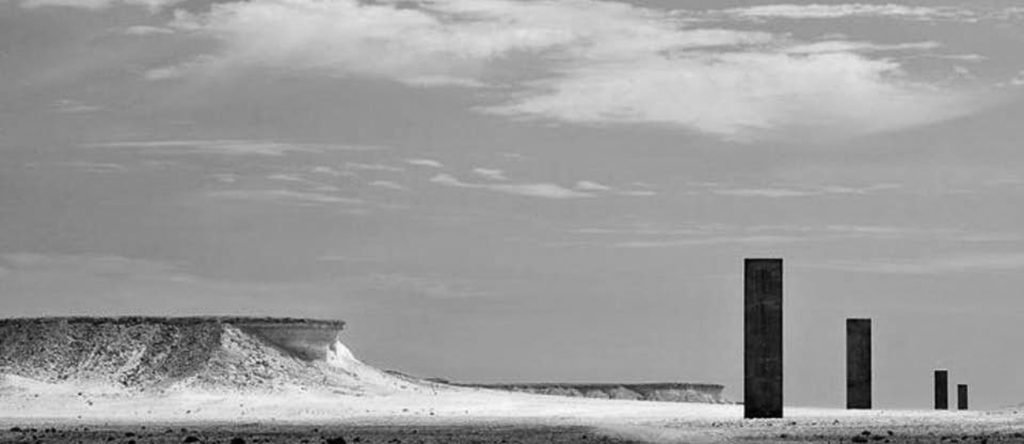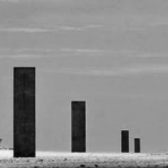State Art is like a virus, it knows no boundaries and spreads like wildfire. In fact, it’s worse than a virus because once it’s arrived you can’t get rid of it because there’s seemingly no cure. And there are plenty of students actually volunteering to contract it. And national boundaries are no protection for it spreads by telepathic brainwashing. This leads to many curious anomalies. Why, for example, should peoples of different cultures and traditions, all as equally rich as our own ‘western’ one, be interested in the brand names of State Art? A good example of this is currently doing the rounds. This piece (above) by Richard Serra comprises four large slabs of metal, each 45 feet high, spread over a thousand yards of a nature reserve in Qatar. A nature reserve! How could anyone in that country believe that an Arab population could possibly see and understand this as a “breathtaking national asset”. One can only conclude that the proliferation of State Art has caused a global pandemic of acute self-delusion. The reason why East/West West/East is in the news is because it’s being cleaned of graffiti. Authorities in Qatar are appalled that locals can’t understand the sculptures’ world significance. It was unveiled in 2014 and the artist hoped it would become a landmark, as if everywhere needs a landmark. Surely this is the fate of anything at all you might plonk in an expanse of desert.

As an addict of the sweeping non-sequitur, Serra has clearly been listening in while Gormless, occupying the next hotel room, practices in front of the mirror. He said: “I attempt to use sculptural form to make space distinct… What that piece does is give you a point of reference in relationship to a line, and your upstanding relationship to a vertical plane, and infinity, and a personal relationship to a context – and pulls that context together. It makes it graspable. That’s actually a place out there now, and there certainly wasn’t one before. We did that simply by putting up four plates.”
Talk about stating the bleeding obvious. You could make the same claim for a line of telegraph poles.
Overlooking the conceit of an artist prepared to inflict his lack of imagination on a nature reserve… was it Moore or Caro who said “More often than not sculpture spoils landscape”?
